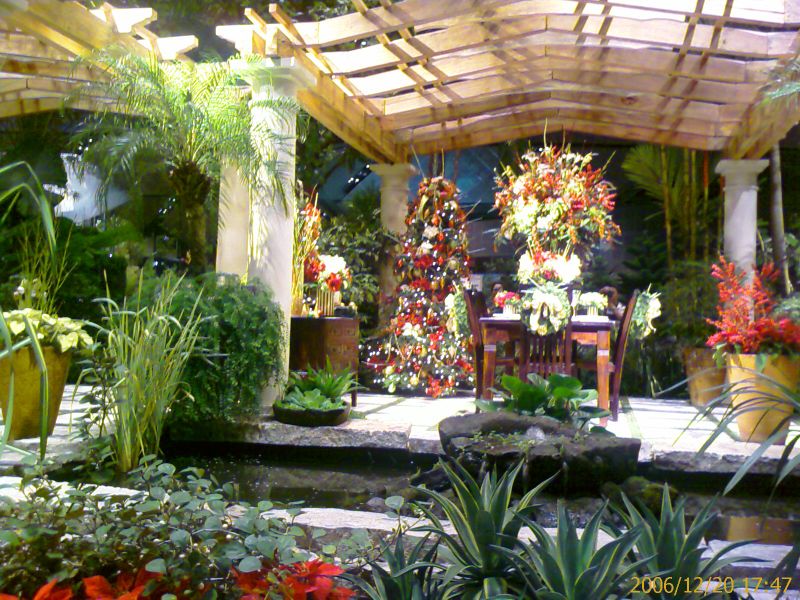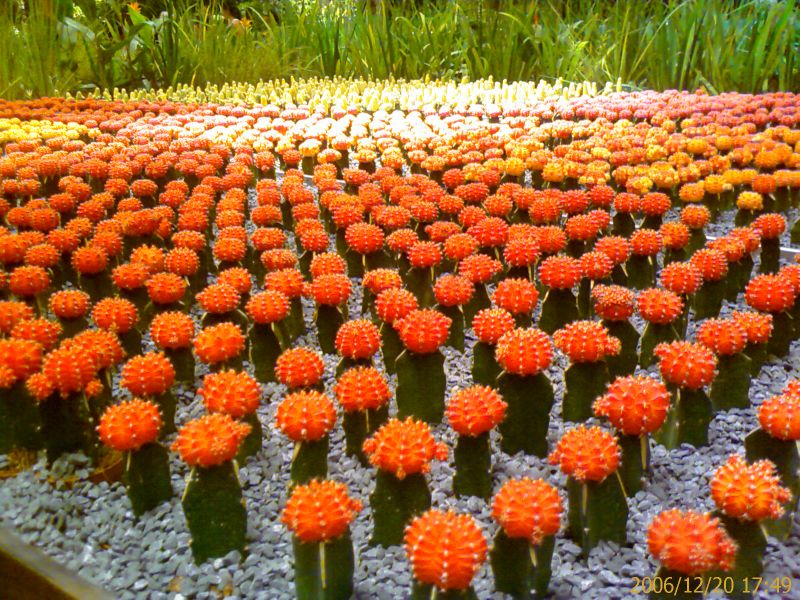
William Troy Taylor's wedding-inspired masterpiece at the Singapore Garden Festival.
What are the secret ingredients behind a successful show able to attract the masses and become the talk of the town? How does one stand out from amongst the busloads of events, all competing for one's share of mind, time and wallet? Are all festivals the same or are some destined for greatness while others, doomed for failure?
My recent visit to the Singapore Garden Festival triggered some fresh insights on what makes an event or exhibition delightful and memorable. Much of it, as you may have guessed, comes from months and weeks of hard behind-the-scenes work.
I have conveniently labelled them the 8 "A"s of Winning Events.
1) Aesthetics - Pay close attention to the design, look and feel of the exhibition to stimulate one's senses. Increasingly, design and other experiential elements (sound, light, scent, etc) makes all the difference between a successful event and a mediocre one. Having high quality, wide variety or low prices alone will not cut the ice.
2) Audience-first - Its all about your audiences, visitors and guests when it comes to events. Think ahead about how you can make it more convenient and comfortable for them. For example, are there sufficient rest points? Are the rest rooms accessible? How about signages pointing them to different exhibits and locations?
3) Advancement - Focus on what's hot and relevant in this day and age, and be one-step ahead of your customers. For example, environmental issues are all the rage now and it is good to take a leaf from there (pun unintended) when organising an exhibition on gardens, like what the Singapore Garden Festival has done. Similarly, if you are doing a fashion festival, look towards the cutting-edge fashion capitals like Milan, Tokyo and Paris.
4) Adherence - Ensure that there is a consistent theme that flows through your exhibition and choreographed experience. In other words, there should be synergy and harmony between the different components. Having something out-of-whack with the rest of the show will stick out like a sore-thumb and not be kindly remembered.
5) Alliances - Work with value chain partners to leverage on their strengths and competencies when putting up a show. They could be suppliers, distributors, or channel partners. For example, while the public sector has the ability to seed ideas and undertake massive events, they will need the market savvy of private sector players to improve commercial sustainability.
6) Advocacy - Get your volunteers, partners, board members, the media and others into the action. Leverage on their networks and reach to interest others in your value proposition. Look at directly marketing and reaching key stakeholders. No man is an island and you just can't go it alone in getting the word out. A good way to reach your audiences is through blogs and other Word Of Mouth channels too.
7) Advertising - It is useless to have a premium event if nobody hears or knows about it. A certain amount of marketing is needed, be they through traditional advertising channels (newspapers, TV, radio, outdoor), new media or media publicity. This is especially critical for large-scale public events where you need to compete for attention, interest and participation.
8) Agility - Finally, as anybody in the events business will tell you, you always have to be on your feet once the curtain raises. Be prepared for any contingencies and last minute surprises that may befall your way. The more high-tech and newly fangled your equipment is, the more likely they may fail you at the critical juncture. Murphy's law does apply, especially the hour before your Guest Of Honour arrives!

Nice from far, but thorny up close. From the Singapore Gardening Festival, specially for Ivan Chew.Labels: attractions, events, exhibitions, photography, Singapore Garden Festival

